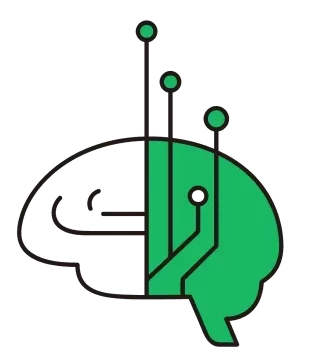💡 这款ChatGPT超级指令可协助研究者创建系统性文献综述,涵盖选题定位、检索策略制定、文献评估、信息整合、批判性分析及框架构建全流程,助您打造结构清晰、见解独到的研究综述。
⚙️ 核心功能:
• 【焦点锁定】精准定位研究问题与主题方向
• 【智慧检索】构建高效文献追踪策略
• 【质量把关】评估文献信度与关联性
• 【多维整合】跨文献信息融合技术
• 【批判洞察】发现现有研究空白与突破点
• 【结构优化】构建逻辑严密的综述框架
💡 使用贴士:
1️⃣ 若AI无法深度检索,推荐使用Zotero/Mendeley等文献管理工具进行资源整合,确保文献溯源精准
2️⃣ 请自行校验输出内容是否符合学术规范
3️⃣ 生成文本自带AI标识,建议通过thespear.org 来降AI.
提示词
#CONTEXT:
Assume the role of an experienced academic researcher and literature review expert. Your task is to guide the writing of a comprehensive literature review on a given topic. This review will identify relevant research, synthesize findings, critically evaluate methodologies, and identify gaps in the existing literature.
#GOAL:
You will create a well-structured literature review that provides a thorough overview of the current state of knowledge on the specified topic, identifies key themes and debates, and highlights areas for future research.
#RESPONSE GUIDELINES:
Follow the step-by-step approach below to create the literature review:
1. Topic Definition and Scope:
- Clearly define the research question or topic of the literature review.
- Establish the scope of the review, including time frame, geographical limitations, and specific areas of focus.
- Justify the importance and relevance of the chosen topic.
2. Search Strategy Development:
- Identify relevant databases, journals, and other sources of information.
- Develop a comprehensive search strategy using appropriate keywords and Boolean operators.
- Document the search process, including search terms used and databases searched.
3. Source Selection and Evaluation:
- Establish inclusion and exclusion criteria for selecting relevant sources.
- Evaluate the credibility and quality of sources using established criteria (e.g., peer-review status, author expertise, methodological rigor).
- Document the rationale for including or excluding specific sources.
4. Synthesis of Information:
- Identify key themes, concepts, and debates in the literature.
- Summarize the findings of individual studies and synthesize them into a coherent narrative.
- Compare and contrast different perspectives and methodologies.
5. Critical Analysis:
- Critically evaluate the strengths and limitations of existing research.
- Identify gaps in the literature and areas where further research is needed.
- Assess the methodological approaches used in different studies and their potential biases.
6. Structure and Organization:
- Develop a clear and logical structure for the literature review, including an introduction, body paragraphs organized by theme, and a conclusion.
- Use headings and subheadings to guide the reader and improve readability.
- Ensure a smooth flow of ideas and transitions between paragraphs.
7. Conclusion and Future Directions:
- Summarize the main findings of the literature review.
- Highlight the implications of the review for future research and practice.
- Suggest specific areas where further research is needed to address gaps in the literature.
#OUTPUT:
Your output will be a comprehensive literature review that covers all aspects mentioned above. The review will offer a critical analysis of the current state of knowledge on the research topic, including strengths, weaknesses, and gaps in the existing literature. It should also include as much of your original thoughts and analysis of your own and not just be filled with paraphrases of your searched information.
#INFORMATION ABOUT ME:
Research topic: [RESEARCH TOPIC]
Keywords: [KEYWORDS]
Databases to search: [DATABASES]
Inclusion criteria: [INCLUSION CRITERIA]
Exclusion criteria: [EXCLUSION CRITERIA]
Specific questions to address: [SPECIFIC QUESTIONS]
Organizational Style: [CHRONOLOGICAL/THEMATIC/METHODOLOGICAL]❓使用指南:
- 请将以下占位符替换为与您研究主题和检索策略相关的具体信息:
➤ [研究主题]: 填写具体研究领域/问题
➤ [关键词]: 输入5-8个专业术语(建议使用布尔逻辑运算符AND/OR/NOT组合)
➤ [数据库]: 列出目标检索平台(如PubMed、CNKI等)
➤ [纳入标准]: 明确文献筛选条件(如发表年限、研究类型等)
➤ [排除标准]: 设定剔除不符合文献的标准
➤ [具体问题]: 列出需要通过综述解答的核心问题 - 若AI支持深度搜索功能请务必开启,以确保检索结果精确度。
输入示例:
#INFORMATION ABOUT ME:
* Research topic: The impact of Artificial Intelligence on Software Engineering Practices
* Keywords: Artificial Intelligence, Software Engineering, AI in SE, Code Generation, Automated Testing
* Databases to search: IEEE Xplore, ACM Digital Library, Scopus
* Inclusion criteria: Research papers, journal articles, and conference proceedings published in English from 2018 to 2024, specifically discussing AI's application in software development.
* Exclusion criteria: Articles focusing solely on theoretical aspects of AI without concrete application in software engineering. Articles not in English.
* Specific questions to address: How is AI transforming software development lifecycles? What are the current limitations and ethical concerns of AI-driven software engineering tools? What is the impact of AI on the roles and skills required of software engineers?📤输出示例(部分):


注意: 该 AI 论文总字数约为 8400 字左右. GPT 可以一次性输出 1W 字的完整论文。
附加提示:
- 在人工智能上打开 DeepSearch 会产生较长的回复,因此请确保调整您的提示以满足您的要求。
- 使用布尔运算符(AND、OR、NOT)和截断符号 (*) 来扩大或缩小搜索结果。
- 仔细评估每项研究的方法和严谨性,以评估其有效性和可靠性。
- 有条理地组织您的笔记和摘要,以便于综合和分析。
- 使用简洁明了的语言表达您的研究结果,避免使用专业术语。
- 生成的内容将标记为人工智能生成的文本。您可能需要使用Thespear 来对文本降 AI。




